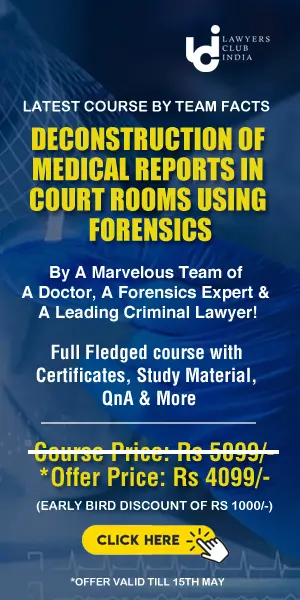Case title:
Mukhtar Zaidi v. The State of Uttar Pradesh & Anr
Date of Order:
18th April 2024
Bench:
Hon’ble Mr. Justice Vikram Nath
Hon’ble Mr. Justice Satish Chandra Sharma
Parties:
Appellant: Mukhtar Zaidi
Respondent: The State of Uttar Pradesh
SUBJECT:
The Hon’ble Supreme Court of India (hereinafter referred to as ‘the Supreme Court’ or ‘the Court’) dealt with a case revolving around procedural issues related to the initiation of legal proceedings in a criminal matter. An FIR was filed against the appellant, following which the appellant filed a protest petition which was rejected by the CJM. It was alleged that CJM did not follow the correct procedure as prescribed in the CrPC. The Supreme Court set aside the impugned order but left it open for the CJM to proceed with the case accordingly.
IMPORTANT PROVISIONS:
The Code of Criminal Procedure, 1973 (CrPC):
- Section 482: grants High Courts inherent powers to exercise their jurisdiction and prevent abuse of legal process to secure ends of justice.
- Section 173: provides for the requirement of police to submit a chargesheet to the Magistrate after completing their investigation into a cognizable offense.
- Section 190: outlines the authority of a Magistrate to initiate legal proceedings by taking cognizance of an offense based on a complaint, police report, or other information.
- Section 200: Outlines the procedure for a Magistrate to take cognizance of an offense.
The Indian Penal Code, 1860 (IPC):
- Section 147: Deals with punishment for rioting.
- Section 342: Punishment for wrongful confinement.
- Section 323: deals with offenses causing hurt (voluntarily)
- Section 506: Deals with punishment for criminal intimidation
- Section 307: prescribes the punishment for attempt to murder
OVERVIEW:
- An FIR was filed against the appellant for multiple offenses under IPC by the respondent.
- Following the FIR, the police conducted an investigation and submitted a report under section 173(2) of CrPC.
- The report stated that there was insufficient evidence to support the allegations made in the FIR.
- Respondent No. 2 alleged that the investigation was unfair because witness statements were not properly recorded.
- They went on to file a protest petition along with affidavits.
- The police report was rejected by the Chief Judicial Magistrate (CJM), Aligarh.
- The CJM took cognizance of the offense and the appellant was summoned to appear in Court. Additionally, the CJM ordered that the case would continue as a State case.
- The appellant contested the order of the CJM before the Allahabad High Court and filed an application seeking to quash the summoning order under section 482 of CrPC.
- The High Court upheld the CJM’s order and dismissed the appellant’s application.
- The High Court’s order is being contested by the appellant before the Supreme Court in the instant appeal.
ISSUES RAISED:
- Whether the Chief Judicial Magistrate followed due procedure as prescribed under CrPC?
ARGUMENTS ADVANCED BY THE APPELLANT:
- Taking cognizance of the offense under Section 190 of CrPC by the CJM and High Court was erroneous as reliance was placed only on the affidavits filed by the witnesses.
- The CJM ought to have treated the case as a private complaint under section 200 of CrPC, in light of the additional evidence and not continue it as a State case.
- The investigation conducted was unfair and witness testimonies were not properly recorded and flawed.
- Reliance was placed on the ruling in Vishnu Kumar Tiwari v. State of Uttar Pradesh to argue that the appellant’s protest petition should have been treated as a complaint.
ARGUMENTS ADVANCED BY THE RESPONDENT:
- Concurring with the CJM’s decision, the respondent argued that the CJM was justified in taking cognizance of the offense and rejecting the police report as it was solely on the basis of the investigation conducted.
- The investigation conducted was in accordance with statutory provisions and fair.
JUDGEMENT ANALYSIS:
- The Supreme Court recognized the CJM’s discretion to reject the protest petition and held the rejection legal.
- Even if the Magistrate ordered the case to be continued as a State case, the Court held that the complainant reserved the right to file a fresh complaint.
- However, it was ruled that the CJM should have followed the procedure outlined in Chapter XV of CrPC.
- The orders of the High Court and CJM were quashed and the appeal was allowed.
CONCLUSION
The appeal was allowed by the Supreme Court, setting aside the rulings of the High Court and CJM, stating that the procedure prescribed in Chapter XV of the CrPC should have been followed by the Magistrate. However, the Apex Court left it open for the Magistrate to treat the Protest Petition as a complaint and proceed accordingly. The Court clarified that its decision did not comment on the merits of the case and would thus not influence the CJM’s future decisions.















